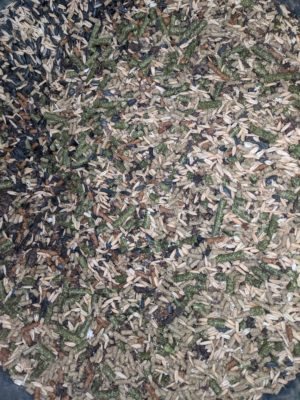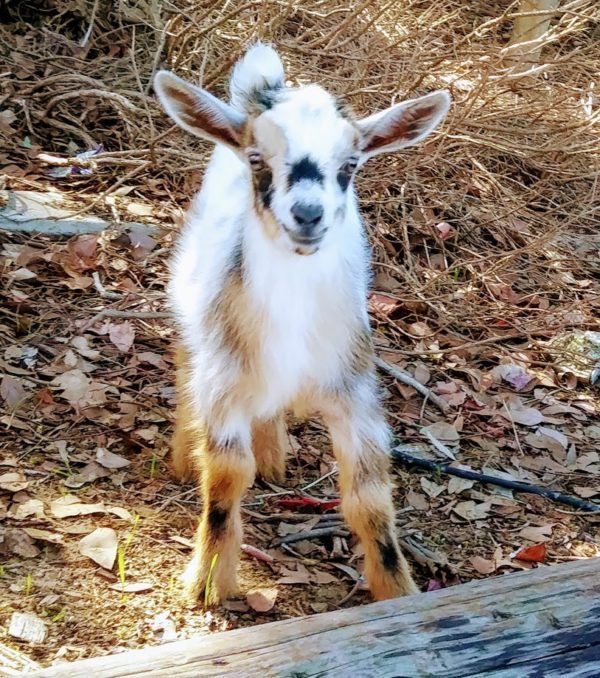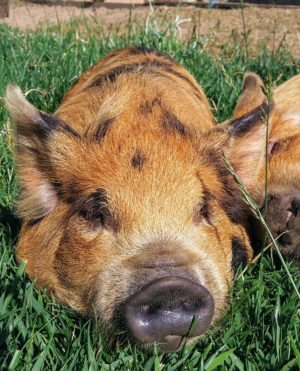Nigerian Dwarf Goats are excellent not only for weed abatement but also tree trimming. Goats eat pretty much everything but being picky eaters they eat the yummy stuff first! With these tips you should have weed free areas just like you imagine and happy goats!
Containment Areas
Nigeria Dwarf Goats are browsers, meaning that they eat a little here and there and just like children they will eat the tastiest stuff first. So the secret to good weed abatement is containment. Create zones using a temporary electric fencing or a portable pen for each area that you want cleaned up. For very low cost you can use T-bars, temporary electric fence wire and an electric fence charger used for 5-miles or less (the type used for dogs works just as well).
Inside this enclosure the goats will be content spending all day munching away on grass, weeds, star thistles, and even poison ivy. Wherever you enclose them, always make sure that your goats have easy access to plenty of water and a bit of shade.
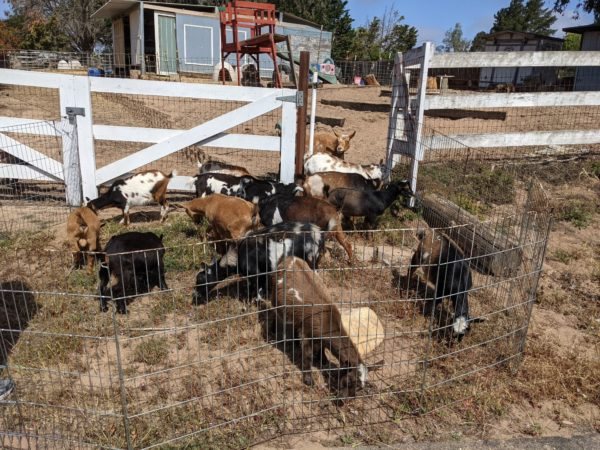
Goats are great Tree Trimmers!
Nigerian Dwarf Goats are the perfect size for trimming the bottoms of your trees. In our back area all our trees are perfectly trimmed at 4-feet!
Poisonous Plants
Be careful not to give your goats easy access to poisonous plants. They have robust digestive systems and are very tolerant of the occasional unhealthy plant – like a tomato plant. But bad things can happen if they were allowed access to a hill full of nightshade or azaleas. Make sure you do some quick research on the types of plants your property has to ensure they are not poisonous to your goats. Some examples of poisonous plants include azaleas, China berries, sumac, dog fennel, bracken fern, curly dock, eastern baccharis, honeysuckle, nightshade, pokeweed, red root pigweed, black cherry, Virginia creeper, and crotalaria.

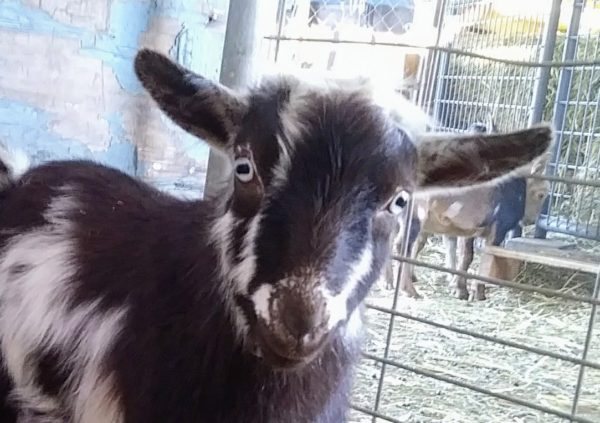

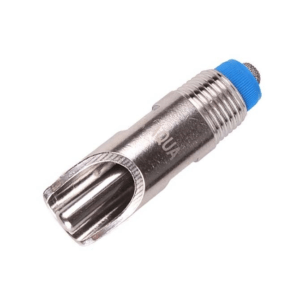 Make sure you have a freshwater delivery system as well. So as you prepare your farm now is the perfect time to run some PVC and setup a livestock waterer.
Make sure you have a freshwater delivery system as well. So as you prepare your farm now is the perfect time to run some PVC and setup a livestock waterer.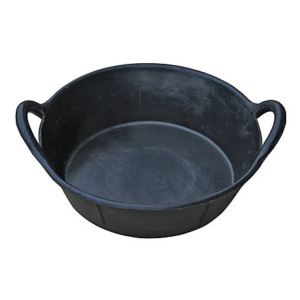
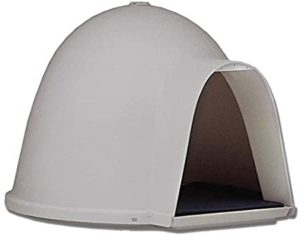 ts can live in a simple shelter such as a medium to large dog igloo to a goat condo! What is of imperative importance is that they are able to get out of the weather. There is a common saying among goat owners, “a wet goat is a dead goat.” That being said, goats absolutely hate getting wet! Whatever shelter you choose to buy/build it will need to be mucked out weekly or sooner. When waste matter is left behind (especially if there is no air circulation) ammonia fumes build up and linger at the bottom of the enclosure. The build up and constant inhalation of these fumes can/will irritate the goats lungs and they can develop pneumonia. Pneumonia in goats more times than not results in the death of the goat.
ts can live in a simple shelter such as a medium to large dog igloo to a goat condo! What is of imperative importance is that they are able to get out of the weather. There is a common saying among goat owners, “a wet goat is a dead goat.” That being said, goats absolutely hate getting wet! Whatever shelter you choose to buy/build it will need to be mucked out weekly or sooner. When waste matter is left behind (especially if there is no air circulation) ammonia fumes build up and linger at the bottom of the enclosure. The build up and constant inhalation of these fumes can/will irritate the goats lungs and they can develop pneumonia. Pneumonia in goats more times than not results in the death of the goat. We recommend a bowl type that mounts to a fence and includes a float and if you have high water pressure (above 50 PSI) use interactive watering devices like a paddle water bowl that requires your goat to push on a level with their nose. Put these waterers high enough so they cannot poop in them. Also be prepared to use a cinderblock so your bucklings and doelings can reach the water until they grow taller.
We recommend a bowl type that mounts to a fence and includes a float and if you have high water pressure (above 50 PSI) use interactive watering devices like a paddle water bowl that requires your goat to push on a level with their nose. Put these waterers high enough so they cannot poop in them. Also be prepared to use a cinderblock so your bucklings and doelings can reach the water until they grow taller.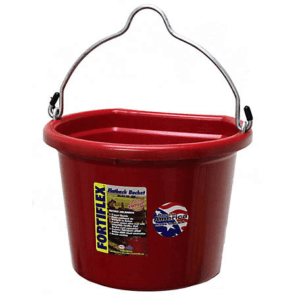
 feeding grain, but if you have many goats I would consider a trough that mounts to the fence. Goats are messy with their hay so use a large trough or a hay feeder.
feeding grain, but if you have many goats I would consider a trough that mounts to the fence. Goats are messy with their hay so use a large trough or a hay feeder. 
